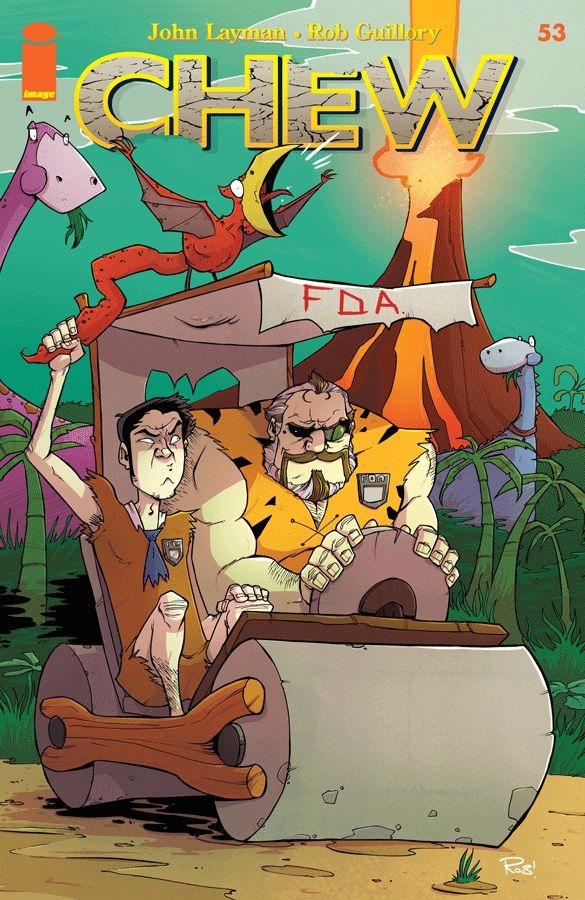John Layman and Rob Guillory's "Chew" #53 starts off lightly and then gets much heavier after the opening course. The first scene checks in with Paneer Sharma and -- while it's nice to see this character again -- the scene is like a light appetizer compared to the rest of the comic, which is devoted to yet another encounter between Tony and Mason Savoy. It begins as one of their most civilized encounters yet, as they chat in a cafe instead of face off in the field. Of course, the result is that -- when they part -- things between them are worse than ever. It might have appeared Tony had already sufficiently burned that bridge, but that was only on his side.
Guillory's facial expressions are even better than usual. In the second scene, Tony goes from his usual grumpiness to looking so enraged he looks scary. Layman's use of boldface nails down the rhythms of speech in the scenes when the characters get really worked up.
The newest food power Layman introduces is unusually broad and useful. Hermann Anari's brief but dramatic presence in the story enables some stunning setting shifts. Guillory meets these challenges with gusto, especially in Tony's strong emotional reactions and in the background jokes.
During this unexpected adventure, Guillory's pacing is exceptional. There's a big plot twist that is obvious in hindsight, but gasp-inducing when it occurs. The page layout maximizes the shock and so does Guillory's unusual palette choices in this scene. Layman puts a big hint in the dialogue, and Guillory even provides visual foreshadowing. Despite that, their pacing is so tightly controlled and adroit these clues are easy to miss, especially when caught up in brisk setting shifts and Savoy's rapid-fire dialogue. Savoy's long speech to Tony is a huge information dump, but his word choices and lecture-like delivery are so typically Savoy it doesn't jolt the reader out of the story. Even if it did, the ensuing shock and subsequent action will jolt them right back in. As Guillory draws eloquent, adrenaline-fueled body language, the reader is likely to share in the shortness of breath and bulging eyes.
The conclusion of "Chew" #53 is no surprise. Tony's strong principles have remained intact throughout all he's been through; the surprise, then, is the strength of Savoy's reaction to another rejection.
Savoy has always been powerful, but his studied diction and exaggerated mannerisms have also made him a fun figure. What's so alarming about Savoy's anger in the last scene is the sense that readers have never seen him lose control, and thus, have underestimated his abilities and his capacity for evil. It's not so much the content of Savoy's threat, but the sudden drop of his sesquipedalian loquaciousness that is alarming -- even chilling. It's like seeing a mask slip when the face underneath is far more frightening than what covers it. This moment stirs up the plot and instantly changes the arc of a flat character.
As the end of "Chew" approaches, Layman does a great job of catching a lot of the balls he's thrown into the air while still introducing new intrigue. The storytelling is confident and sure-footed, and readers who have followed the title over its long run will find all their confidence is well-placed. The storytelling as a whole is richer than ever before, while the humor maintains its happy zaniness and manic energy throughout.

